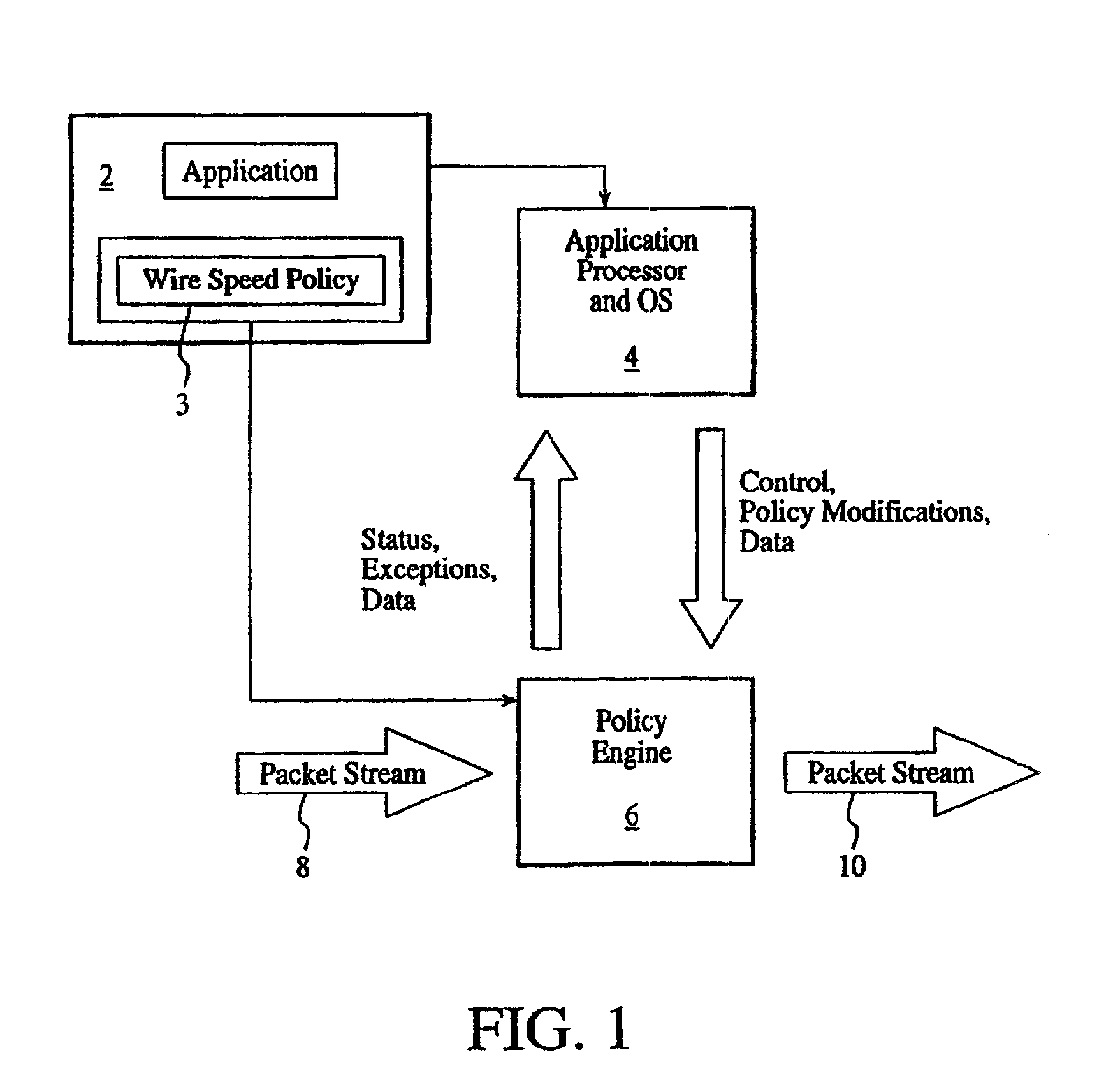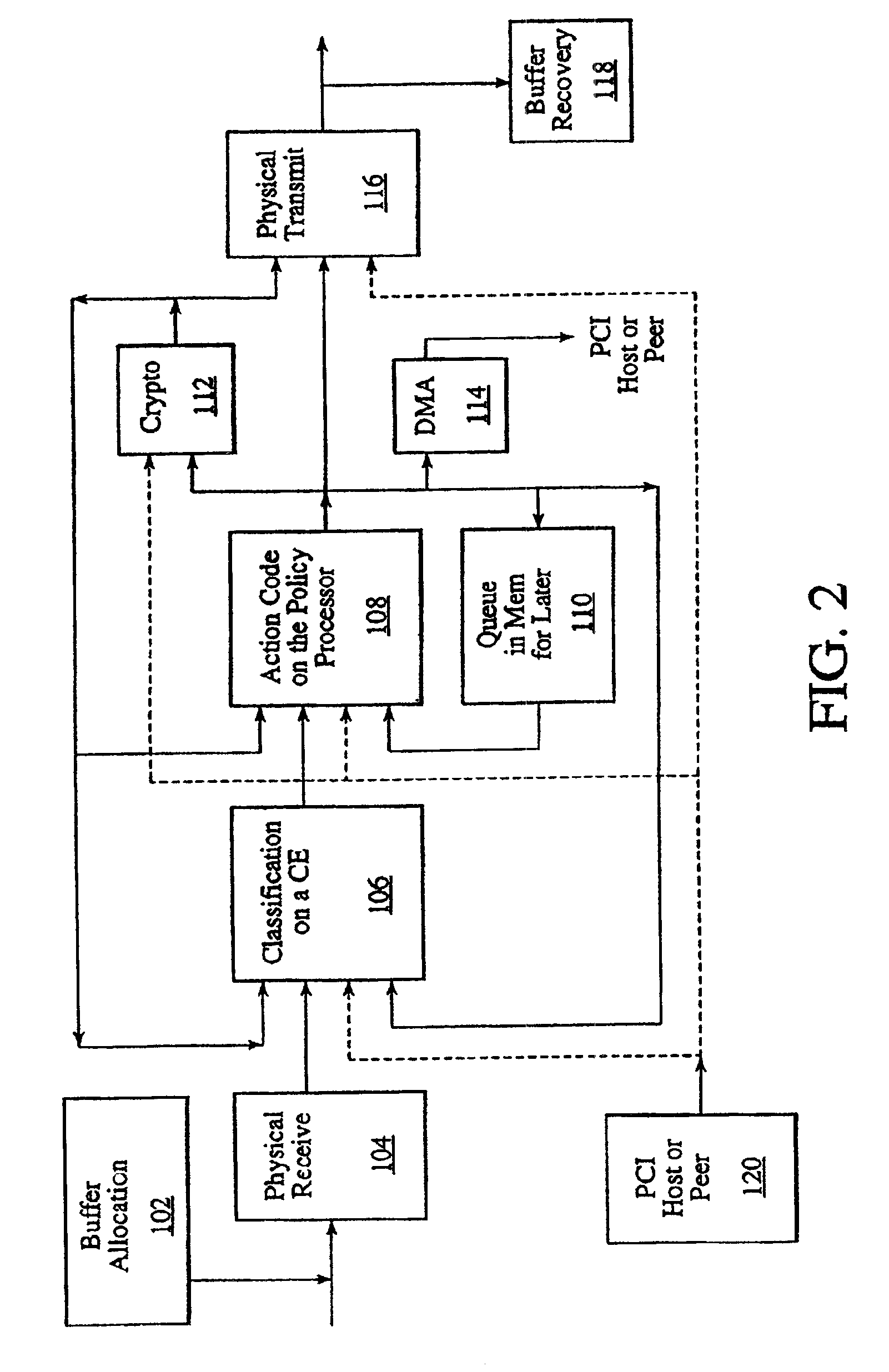Programmable system for processing a partitioned network infrastructure
a network infrastructure and programmable system technology, applied in the field of computer networks, can solve the problems of affecting the performance of the application, the complexity of the application, and the traditional methods of dealing with the problem are no longer adequate, and the application is running on a general purpose computer
- Summary
- Abstract
- Description
- Claims
- Application Information
AI Technical Summary
Benefits of technology
Problems solved by technology
Method used
Image
Examples
example syntax
INITF init_actions(void* id, char* name, Image* obj){return new ExampleAce(id, name, obj);}
The function should return a pointer to an object subclassed from the Ace class, or a NULL pointer if an Ace could not be constructed. Throwing an NBaction_err or NBaction_warn exception may also be appropriate and will be caught by the initialization code. Error conditions will be reported back to the Resolver as a failure to create the Ace.
Return Values from Action Code / Handlers
When a rule's action portion is invoked because the rule predication portion evaluated true, the action function must return a code indicating how processing should proceed. The action may return a code indicating it has disposed of the frame (ending the classification phase), or it may indicate it did not dispose of the frame, and further classification (rule evaluations) should continue. A final option available is for the action to return a defer code, indicating that it wishes to modify a frame, but that the frame...
example
For fragments, only the single fragment is modified. For datagrams, all comprising fragments are updated. The following simple example illustrates the use of one of these objects:
Assuming ipa1 is an address we wish to place in the IP packet's destination address field, buf points to the ASL buffer containing an IP packet we wish to rewrite, and iph points the IP header of the packet contained in the buffer:
IPDNat *ipd = new IPDNat(&ipal); / / create IP DNat objectIP4Fragment ipf(buf, iph); / / create IP fragment objectipd−>rewrite(&ipf); / / rewrite fragment's header
The use of other IP NAT objects follows a similar pattern.
PUM
 Login to View More
Login to View More Abstract
Description
Claims
Application Information
 Login to View More
Login to View More - R&D
- Intellectual Property
- Life Sciences
- Materials
- Tech Scout
- Unparalleled Data Quality
- Higher Quality Content
- 60% Fewer Hallucinations
Browse by: Latest US Patents, China's latest patents, Technical Efficacy Thesaurus, Application Domain, Technology Topic, Popular Technical Reports.
© 2025 PatSnap. All rights reserved.Legal|Privacy policy|Modern Slavery Act Transparency Statement|Sitemap|About US| Contact US: help@patsnap.com



